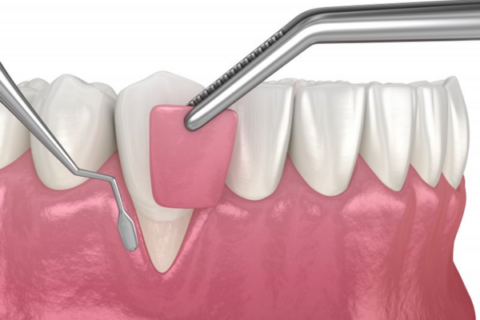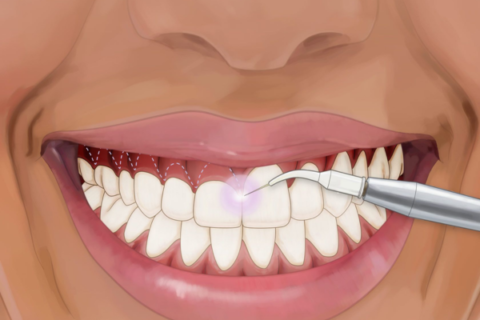Nowadays, gum disease patients have the most options for treating their condition, both cosmetically and health-wise, thanks to gum plastic surgery. To ensure that the wound heals swiftly and the patient can soon have the expectedly brilliant smile, the patient must adhere to a strict diet and cleanliness routine following the procedure. Please refer to the following for the optimal after-care schedule following gum plastic surgery.
Because of how their teeth and gums are positioned, some people’s teeth appear overly “short”. This makes the smile “gummy”. Excess gum tissue is frequently removed to reveal more of the tooth’s crown in a process known as “gum contouring.” A better-looking smile can actually be achieved by meticulously shaping your gum line to produce the ideal ratio between gum tissue and tooth surface.
Gum contouring can even out and balance the appearance of your gums and teeth if there is uneven gum tissue surrounding a tooth. The process results in an aesthetically beautiful gum line that is even and uniform.
When is gum trimming necessary?
A cosmetic gingivectomy is a straightforward treatment that addresses the issue of exposed gums when smiling, reveals the tooth’s crown, and lengthens the appearance of the teeth. This is a safe technique that requires less disruption to the body’s structure and has minimal effects on the patient’s life or health following surgery.
The goal of the surgery is to address gum disease and any harm that it may have brought about by:
- regrowing damaged bones and tissues
- preventing tooth loss
- reducing gum gaps between teeth, known as black triangles
- reshaping the jaw hone to lower the risk for bacterial growth in bone crevices
- eliminating bacteria and infection
The mouth cavity is used for gum surgery, which is aesthetically sutured to promote rapid healing and scar-free healing. The dentist will assess and counsel each patient based on their unique condition in order to choose the most thorough course of action and guarantee the success of the surgical procedure.
Surgery is frequently scheduled by dentists for patient cases:
- Using a lot of strong antibiotics makes the gums grow stronger.
- Congenital long gums cover many parts of the crown, making the teeth shorter.
- After orthodontic treatment, the socket and teeth are complicated, causing the teeth to recede a lot, leaving the gums deeply rooted in the crown of the tooth.
Oral hygiene after gum plastic surgery
Maintaining good oral hygiene following cosmetic gum surgery is equally vital for patients to focus on, without coming into contact with the wound. Because if done wrong, it can result in painful gum bleeding, torn sutures, sensitive teeth, and more… Several points about routine dental care, like:
- To reduce direct pressure on the wound, bite the gauze when bleeding and replace it as little as possible.
- During the first three days following surgery, avoid brushing your teeth. You can start rinsing your mouth with salt water on day two to prevent blood clots.
- To get rid of dangerous germs from the oral cavity, use chlorhexidine or diluted saline.
- Avoid poking your hands, toothpicks, etc. right into the wound. To be safe, you should use dental floss while dealing with plaque.
For more information on cosmetic gum surgery, please contact our clinic – Dr. Ramisz Dental & Facial Cosmetic Clinic.


